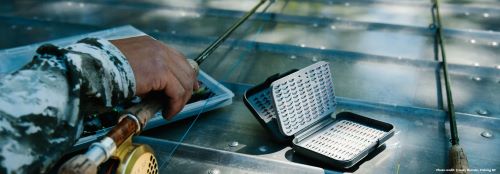With such an abundance of food sources available to our Interior rainbow trout, matching the hatch can be an intimidating game at times. When fish are being selective, fly patterns that represent a staple food item in their diet can be the most productive way. Ever-present food sources include aquatic insects and other invertebrates like leeches, bloodworms, and scuds (freshwater shrimp).
Here are six go-to fly patterns to use when there is no hatch, or the fish are behaving in a finicky manner:
The Cranberry Larvae
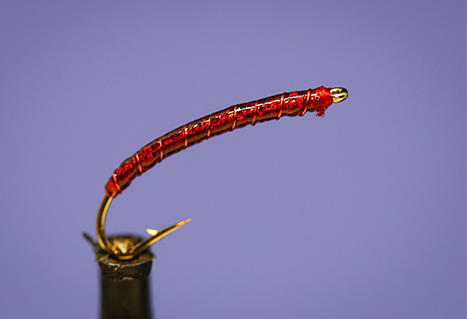
Bloodworms are the larval stage of a chironomid’s life cycle, and are typically found near the bottom of a lake. Fish can key in on bloodworms at any time of the year, with early spring, late fall, and mid-summer being common. This fly pattern is effective under a strike indicator or hung vertically from a full-sinking line. The key to fishing bloodworm patterns is ensuring your fly is within 0.3 to 0.6 metres (a foot or two) of a lake’s bottom.
UV Pregnant Shrimp
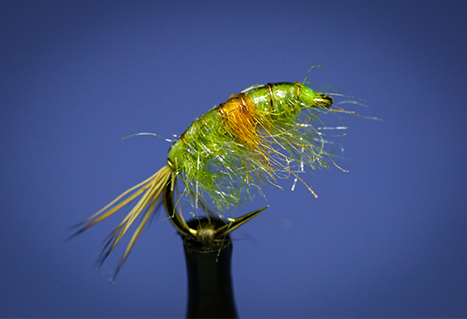
Shrimp are a very important food source in many of our British Columbia lakes. The ultraviolet properties of this fly give it a natural, translucent look while the orange egg sac imitates that of a pregnant scud. This fly pattern works very well when fished in shallow water (especially tight to reed beds) hung under a strike indicator, or stripped in quickly on an intermediate sinking fly line.
Deer Hair Gomphus
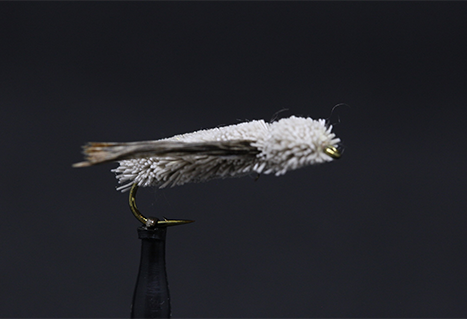
Originated by Jim Crawford, the Deer Hair Gomphus fly pattern has become a staple in the fly boxes of many stillwater anglers. This pattern, which imitates a dragonfly nymph, is mostly fished from late spring into early fall, but will produce at any time during the season. Due to its buoyancy, a full sinking line is imperative for fishing this fly. Focus on fishing transitions between deep and shallow water, especially when dragonflies are migrating towards shore to emerge.
UV Polar Chenille Leech
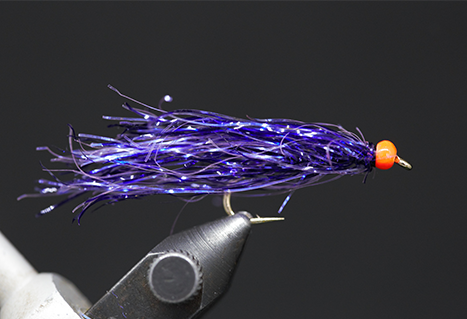
The Polar Chenille Leech pattern is undoubtedly not the fanciest fly in the box. However, when submerged in water it really comes to life, with each strand of its body material pulsating and breathing when retrieved. Tied in a variety of sizes and colours, this fly pattern can be hung under a strike indicator, retrieved on a full sinking line, or trolled at slow speeds.
Sunburst Blob
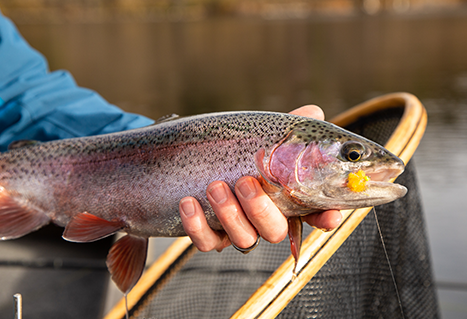
Originating in the United Kingdom, blob patterns have become increasingly popular in British Columbia over the past few years. Though unconventional, blobs can prove very effective when fish are being selective or not keying in on any particular food source. Blob patterns fish well under a strike indicator, or quickly retrieved on a sinking line. Hang on tight, as the takes can sometimes be violent.
Pine Squirrel Leech
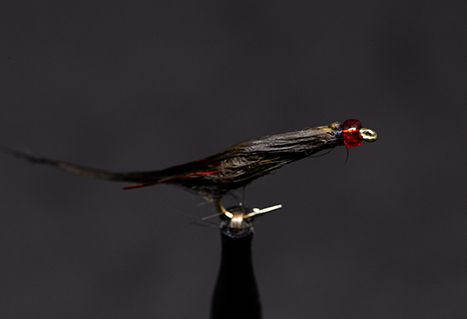
If you could only fish one fly pattern in our Interior stillwaters, the Pine Squirrel Leech would be a worthy candidate. Leeches are a readily available food source, and fish will typically turn onto them after a heavy feed of chironomids. This fly can be altered in many ways, including the addition of a fluorescent orange or chartreuse bead at the front. This fly pattern fishes well suspended below a floating fly line, with or without a strike indicator. Sinking fly lines – from an intermediate through to a fast-sink – are also a great option for fishing this leech pattern.
Author: Jordan Oelrich
Banner Photos Jordan Oelrich, Jeremy Koreski
Jordan Oelrich is the owner of Interior Fly Fishing Co. When he’s not guiding, Jordan shares his knowledge for fishing as a writer and fly-tying instructor.
